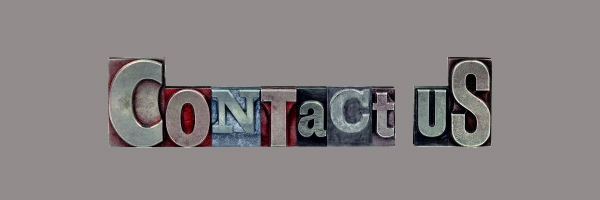
What you write is what you are, especially on the Web.
Yet many business owners only relate their online brands to logos and design, discounting the power of the written word.
Your business communicates its brand with every word you use on your website. Through language, we conceive a personality, set a tone and create expectations — for better or worse.
When communicating in person you have the luxury to receive verbal feedback, along with body language and facial expressions, in real time. And you can react accordingly. Your prospects also have the prerogative to peer into your eyes to decide if they trust you and accept what you’re telling them.
However, when potential clients visit your website, they don’t have the same opportunity to size you up. Your online visitors can’t look you in the eye, so they look into your words to help them decide if they trust your brand, your business and you.
All Words Are Not Created Equal
The words you use on your website should project the personality of your products, services and business. Your words must form and foster a clear verbal identity, reflecting who you are and strive to be. They signify what you stand for and promise to deliver.
Consider the auto industry, with the following samples from manufacturers’ websites:
“Enjoy bold, spirited styling with an air of sleek confidence. A distinctive radiator grille nose hints at the power that lies beneath the hood. The highly characteristic tail, with dual tailpipes will put a look of awe on the faces of all those you leave in the dust. The SLK-Class is the ultimate combination of classic sporty personality and effortless poise and assurance.”
Mercedes positions itself to be the ultimate luxury vehicle.
“Do bear in mind that 0-100 km/h in 5 seconds limits your chances of actually spotting the BMW M Coupe on the road. For that you can thank a 330 hp in-line six engineered to peak at an astounding 7,900 rpm. Raw power is unleashed precisely through a short-throw, 6-speed manual and is kept in-check by massive compound, cross-drilled brakes.”
BMW boasts performance.
“Preventative safety features like Dynamic Stability and Traction Control (DSTC) help you, the driver, avoid accidents by evading them. And nothing is safer for you than no accident at all. So every Volvo is equipped with a variety of innovative preventative safety features, many of which are, of course, uniquely Volvo, developed by Volvo safety engineers over years of research, design and testing, both in the laboratory and the real world.”
Volvo purposely remains synonymous with safety.
Each individual message builds on its brand to create distinctiveness and value in a bid to engage the targeted audience. Hence, the words Mercedes, BMW and Volvo choose directly impacts their respective bottom lines.
What Does Your Brand Stand For?
Your words need to define who you are and what you sell, catering specifically to your target market’s needs. Moreover, your web copy requires a distinct and consistent voice that expresses the value of the relationship you’re seeking, accompanied by assurance. Only then can it truly forge an emotional connection with your prospects and established customers alike.
To build your brand with words, your web copy needs to take into account:
- Existing perceptions of your products, services and company
- The actual position you currently occupy on these fronts
Recognize the gaps between the two points and how they measure up to where you want to be.
The difference needs to be made up through your communications – from your policies, to packaging, to your web copy.
Following are some key elements to help foster a relationship between your brand and your audience:
Word association
What are your core strengths? What do you promise customers? Invest time to determine what you’re good at, thus, focusing on your strengths. Your words then in turn establish a relationship with the customer by offering functional, emotional or self-expressive benefits.
Image
Your words have the ability to sway consumers to associate certain attributes to your brand. This can shift how you fit relative to competitors in your marketplace, potentially altering who you compete with. Some ingenuity can set you apart from the others to the point you can actually make your competition appear bland.
Character
Your words should take into account where you come from, who you are and what you stand for. This is your guiding light. Be authentic. One step outside your character could tarnish your integrity.
Culture
Your words should reflect the values that give life to your business. While you don’t need to list your core values, your words should draw on this symbolic frame. Ensure that it resonates in and around your business.
Personality
Your web copy needs to bring to light your business’ human characteristics, including everything from age to class to personality traits. Get creative with delivery. For instance, many businesses post employee photos on websites. But why not actually quote employees in your web content? It’s a great way to “put a human face” to your company and promote your own as industry experts.
Spirit
Do your words represent the emotional elements and values of your business? Demonstrate commitment and authenticity to create a spirit that’s not only engaging, but contagious.
Choose Your Words Wisely
Make your words count. Failure to do so could result in a blotched brand. A confused customer equals a missed opportunity.
Never neglect the fact that words are the foundry of communication. They help us express, understand and learn. They are invaluable to influencing your audience’s decision-making process and loyalty.






The Mercedes example completely obliterates your point. There’s nothing in that paragraph that communicates that Mercedes makes ‘ultimate luxury vehicles’. I guess it’s a testament to their branding that even when they don’t say it, you see it!
I just reread the Mercedes paragraph and disagree – it’s all about luxury. Boldstyling…sleek confidence…distcinctive grill nose…look of awe…effortless poise and assurance…that’s certainly not about Hyundai!
It was interesting.
nice blog cheers